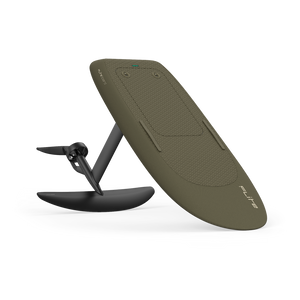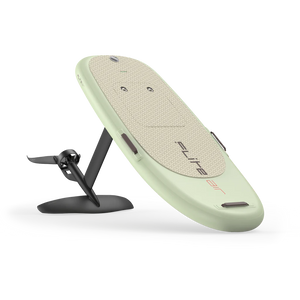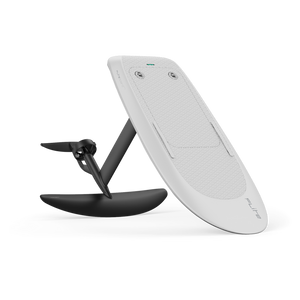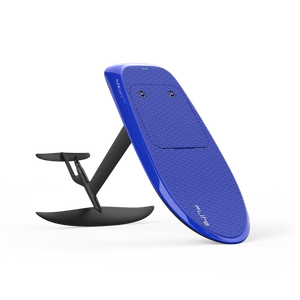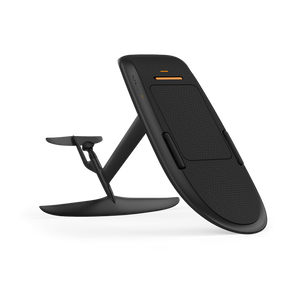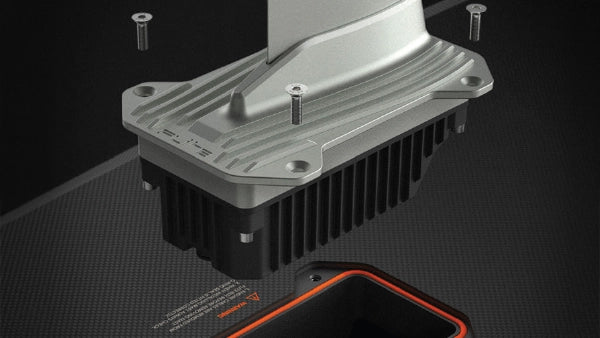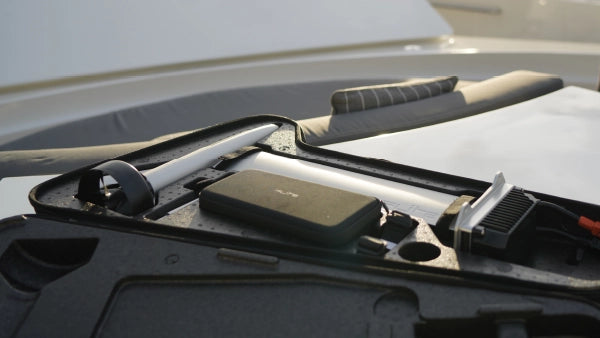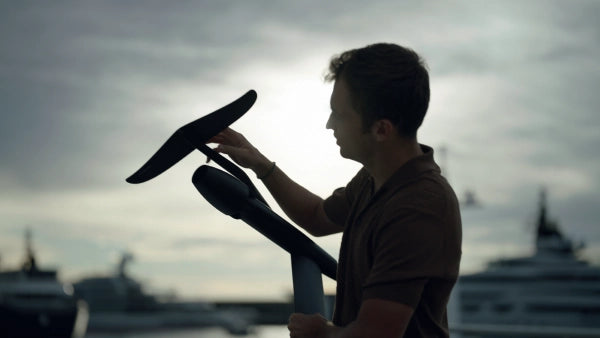How to eFoil: A Step-by-Step Guide for Beginners
Have you ever seen a surfer who looks like they’re flying over the water? If yes, you’ve probably seen someone eFoiling. It looks like magic, but learning to eFoil is actually quite simple. In this article, we will explain the key steps to get you flying. Don’t worry if you’re a beginner, as the tips below will be enough to get you started on your eFoil journey.
Is eFoiling hard to learn?
One of the most common questions is: how hard is it to learn to eFoil? Like with anything, the learning curve will vary from person to person, however it’s generally achievable for most people. We recommend having a can-do attitude, along with patience and determination. It might take a few sessions before you feel comfortable foiling, but the journey can be fun. When you get that feeling of flying over water, it will be more than worth it. You’ll be smiling for hours afterwards.
How long does it take to learn e foil?
Learning to e-foil can be a quick and rewarding experience, especially with professional instruction. With a lesson at a Fliteschool, you can expect to be up and riding within minutes. The exact time it takes to master the basics may vary depending on your previous watersports experience and the set up you choose, but e-foiling is generally considered a relatively easy sport to learn. With the right setup and guidance, you'll find that e-foiling is not only fun but also an accessible way to enjoy the water.
Find a Fliteschool >
How to ride an efoil in 5 easy steps
In this section we’ll provide a step-by-step guide to getting started.
-
Safety First
Start by choosing a location with clear water and sufficient depth. We recommend 1.5 meters / 5 feet so your eFoil doesn’t hit the bottom or any debris. Familiarize yourself with local regulations and restrictions before getting out on the water. Wear the necessary safety equipment, such as an impact vest / personal flotation device (PFD) and a helmet. Don’t go in any surf zones with breaking waves and keep clear of swimmers or other watercraft. We always say that you shouldn’t fly out further than you’re willing to swim back. -
Start with a lesson
Consider taking a lesson from a certified eFoil instructor, like at one of our global Fliteschools. They will teach you the fundamentals, including safety guidelines, proper body positioning and how to control the eFoil using the handheld remote. An in-person lesson will make learning significantly more enjoyable and easy. Beforehand, you can check out our How to Fliteboard video here. -
Mastering your balance
To get started, lay on your stomach then transition to kneeling on the board. You can spend some time getting comfortable in that position, eventually planing on your knees. The next step is to get standing, with a focus on finding stability. While surfing requires more back foot pressure, eFoiling requires more front foot pressure. Find the sweet spot where you are far enough forward to maintain balance while foiling. For more details about this process, you can read our article Learning how to Fliteboard is easy. -
Learning to fall
Inevitably, when you’re learning to eFoil, you will fall. It’s important that you know the safest way to do so. When you feel off balance, don’t try to fight it. Simply fall in the same direction as the board. That will make it most likely you are falling away from the eFoil and wings, which are the sharpest parts. -
Practicing control
Once you’re comfortable flying in a straight line, you can play with your speed. Notice how your ride gets smoother at faster speeds, but be careful not to go too fast. You can still feel the thrill without the top speeds! Pay close attention to how even the most subtle movements and change in balance can affect the eFoil. You can use your body weight to make small turns. Keep practicing until you feel confident to control the board. And of course, enjoy the experience.
So many people around the world have discovered the magic of flying over water on an eFoil. It will require practice and patience to learn, but if you embrace the challenge you will be richly rewarded. Get ready to create memories that will last a lifetime.
